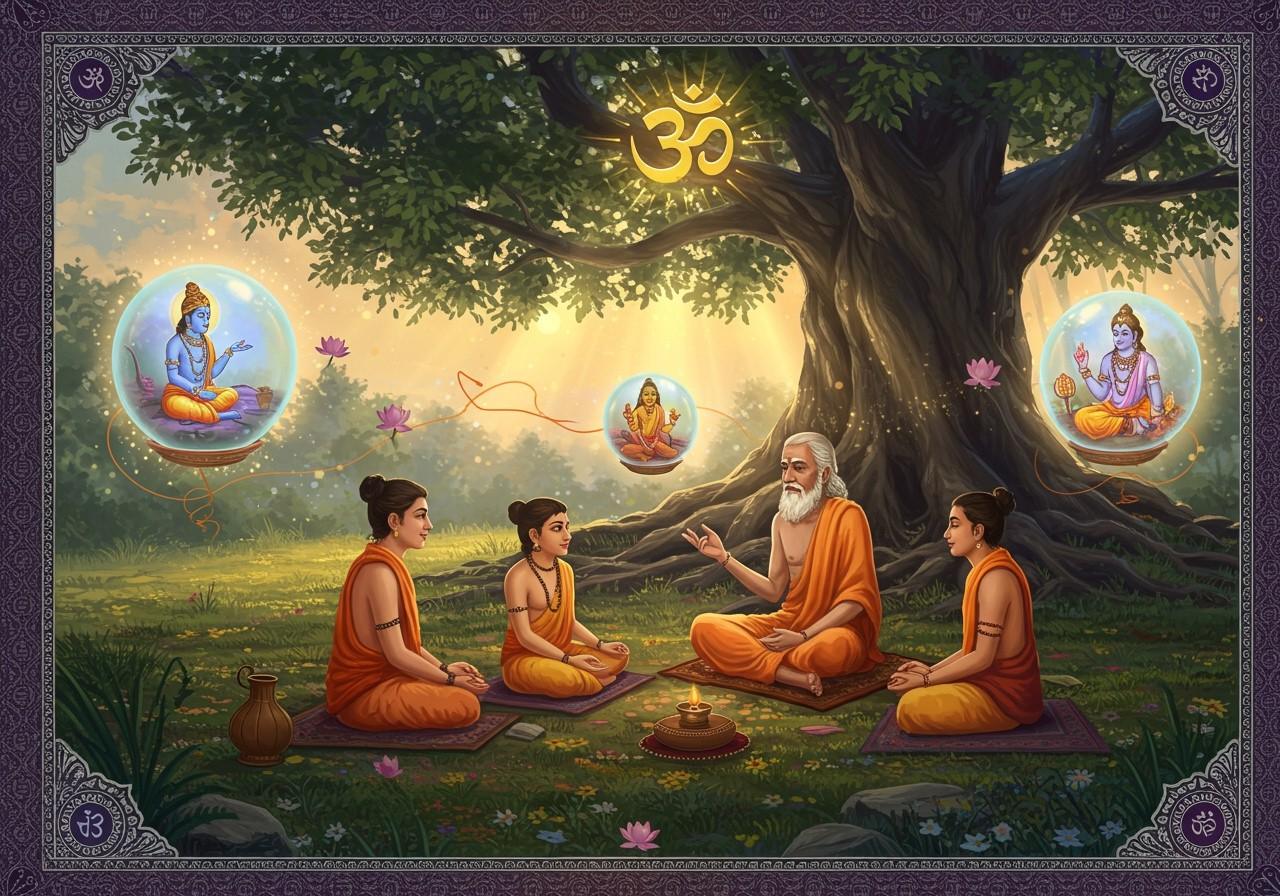
The Upanishads, cornerstones of Indian philosophical and spiritual thought, offer profound insights into reality, the self (Atman), and the universe (Brahman). This article delves into their history, composition, core principles, and enduring relevance. For those who cherish cultural heritage and spiritual wisdom, this exploration will be particularly enriching.
Historical Background
Composed between 800 BCE and 200 BCE, the Upanishads mark a pivotal shift in ancient India from ritualistic practices to philosophical inquiry. This period, vibrant with socio-political and religious activity, saw the emergence of Vedanta, the concluding portion of the Vedas, of which the Upanishads are a part. Key figures like Vyasa and Shankaracharya played crucial roles in their dissemination and interpretation.
Authorship and Structure
Unlike texts with single authors, the Upanishads evolved over centuries, shaped by the contributions of numerous sages and rishis. Initially transmitted orally, they were later documented in a blend of prose, poetry, dialogues, and philosophical discourses. Categorized as major (Mukhya) and minor (Upa) Upanishads, they represent the culmination of Vedic thought. Prominent examples include the Isa, Katha, and Chandogya Upanishads. For a deeper understanding, explore resources like Hindu Scriptures: A Detailed Exploration.
Translations and Global Influence
Dara Shikoh’s Persian translation during the Mughal era bridged cultural and religious divides between Hindu and Islamic traditions. Later, Western thinkers like Schopenhauer and Emerson found inspiration in these texts. Scholarly translations by Max Müller and Eknath Easwaran into English and other languages opened the Upanishads to a global audience. You can learn more about the impact of ancient texts in Ramayana’s Impact: Indian Art and Literature.
Core Teachings and Principles
The Upanishads introduce fundamental concepts like Brahman (ultimate reality) and Atman (the individual self). They delve into the relationship between these two, exploring the path to Moksha (liberation). Meditation, self-reflection, and ethical conduct are emphasized as crucial for spiritual growth. The Upanishads underscore the interconnectedness of all beings. Key pronouncements like “Tat Tvam Asi” (Thou art That) and “Aham Brahmasmi” (I am Brahman) encapsulate their profound wisdom. This resonates with the guidance offered in Find Your Guru: Guidance for Your Spiritual Journey.
Contemporary Significance
The wisdom of the Upanishads remains remarkably relevant today. Their teachings offer guidance on spiritual development, life’s purpose, and navigating contemporary challenges like mental well-being, environmental responsibility, and social harmony. There’s a growing interest in these teachings among younger generations seeking meaning and connection to their heritage. For practical advice on spiritual retreats, see Planning Your Spiritual Retreat: An Ashram Stay Guide.
Guidance for Beginners
For those new to the Upanishads, “The Principal Upanishads” by Prof. Sarvepalli Radhakrishnan is an excellent starting point. It offers comprehensive translations and commentaries, making these complex texts accessible. Beginning with the Isha Upanishad, the shortest, is often recommended. Online resources like ExploreVedanta.com and VedantaHub.org provide structured learning materials. These resources are designed to support beginners in understanding these ancient texts. You can also deepen your devotion with resources like Ramcharitmanas: A Deep Dive into Devotion and Epic Narrative.
Poojn.in: Supporting Your Spiritual Journey
As you delve into the Upanishads, enhance your study and practice with authentic puja items from Poojn.in. Our collection includes a wide variety of products, including this beautiful and traditional Small Beads Bel Mala (₹799), perfect for creating a sacred space for contemplation and meditation.
Conclusion
The Upanishads offer enduring wisdom, inspiring truth-seekers across generations. Engaging with these texts connects us to a rich heritage, deepening our understanding of life and the universe. Their teachings on reality, the self, and the cosmos guide us towards spiritual enlightenment and ethical living. Embracing the principles of the Upanishads can bring clarity, peace, and a profound connection to our cultural roots. Whether you are a beginner or a seasoned explorer of these texts, the Upanishads remain a beacon of spiritual guidance and cultural richness.


